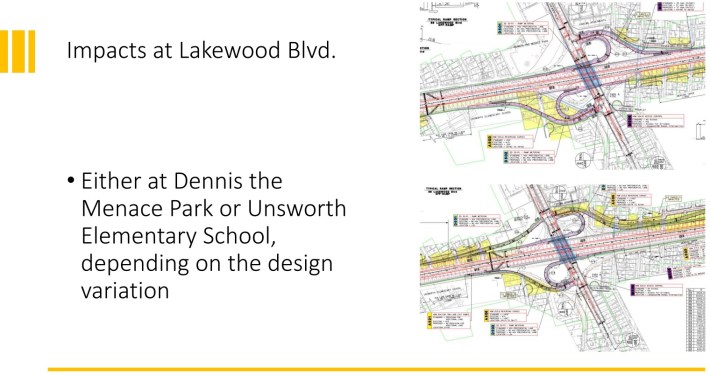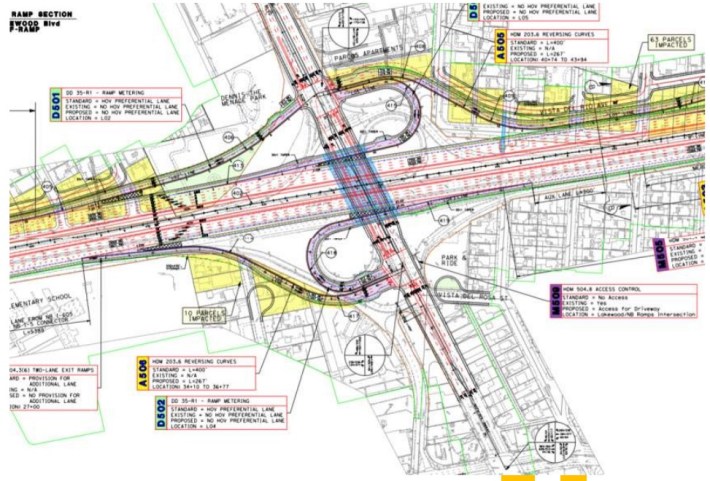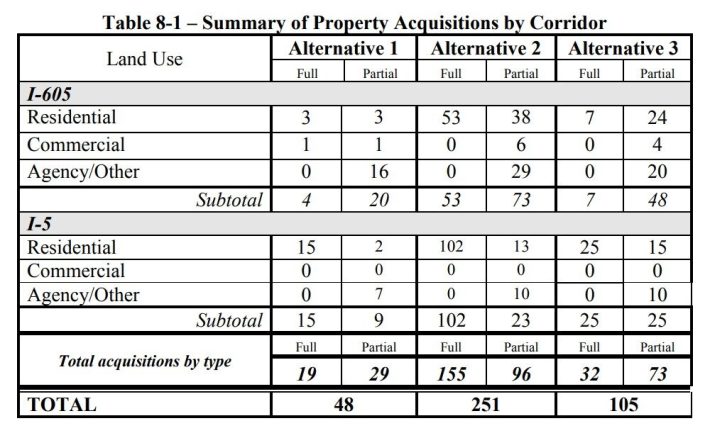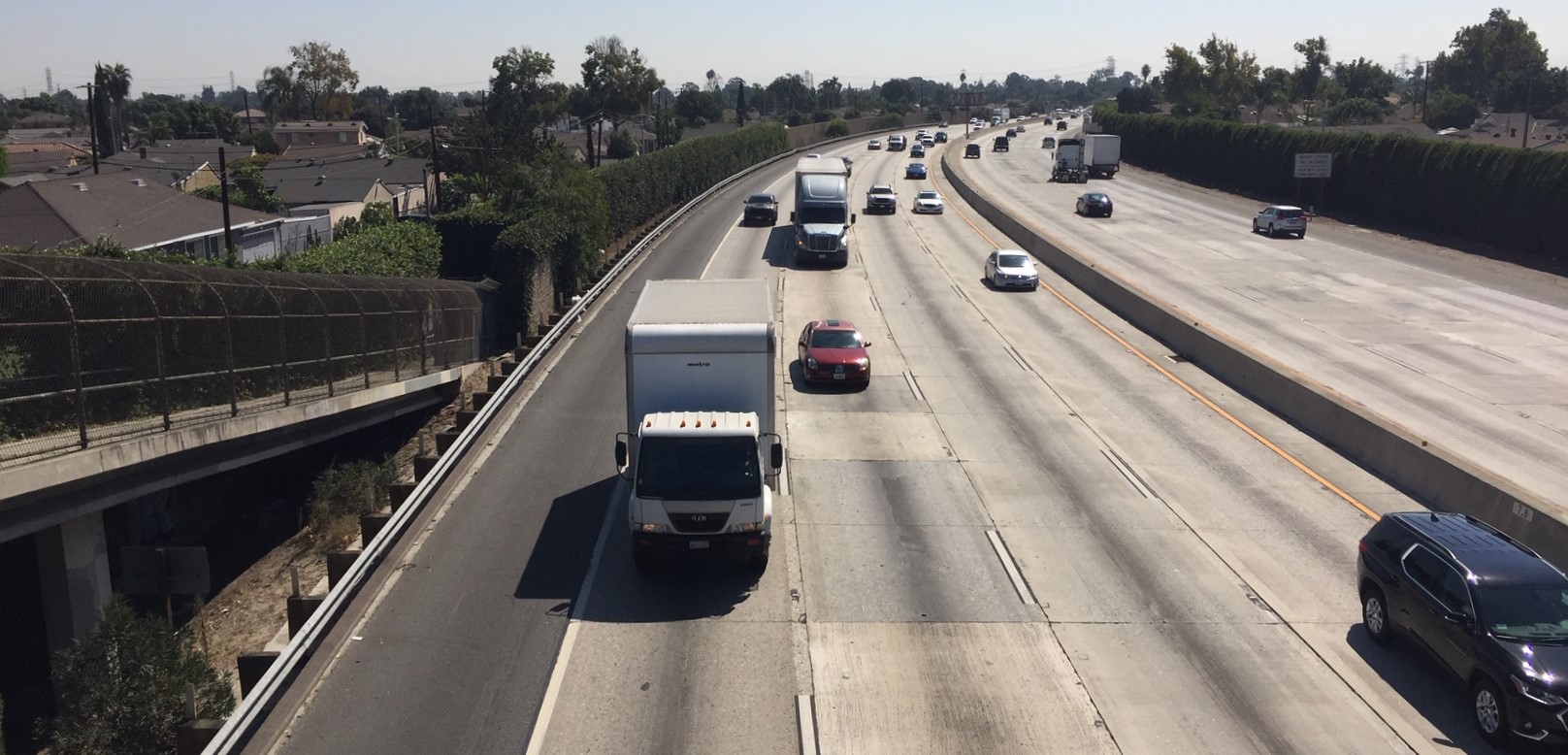Last week the Metro board voted to rein in the excesses of the Metro and Caltrans 605 Freeway Corridor Improvement Project, a plan to spend several billion dollars to widen about a dozen miles of the 605, plus parts of other intersecting freeways, including about three miles of the 5 Freeway through the cities of Downey and Santa Fe Springs. Metro announced that the 605CIP would impact more than 1,200 properties - including demolishing more than 200 homes in the city of Downey.
Metro refuses to release its list of the properties impacted, even though, in a September 29 letter, CEO Phil Washington wrote that the project draft environmental document studies had already been completed. In that letter, Washington stated that "the impacts of the [605CIP] project were disclosed once known... [The impacts were] discussed in detail with... the I-5 JPA."
The I-5 Consortium Cities Joint Powers Authority is a little known governmental body whose mission is basically to widen the 5 Freeway between the 91 Freeway (in the Orange County city of Anaheim) and the 710 Freeway (in the city of Commerce.) Metro and Caltrans are currently widening the 5 Freeway from the Orange County line to the city of Norwalk. That $1.9 billion seven-mile widening project demolished numerous homes and businesses. The project had been scheduled to be completed in 2016 and is now anticipated to finish in 2022.
The I-5 JPA board currently consists of representatives from the cities of Commerce, Downey, La Mirada, Norwalk, and Santa Fe Springs. Though the JPA's purpose is freeway building, it is not as powerful or well-funded as the county's freeway builder, Metro, or California's freeway builder, Caltrans. Those big agencies tend to call the shots, and can treat the JPA as a sort of local advisory council.
Since Phil Washington stated that the 605CIP details were discussed with the I-5 JPA, Streetsblog sought project details in the JPA's public records. Very little JPA information is available on their one-page website, but Streetsblog was able to obtain the JPA's 2020 meeting agendas and minutes, including staff reports. Contrary to Washington's assertion, Metro does not appear to have discussed the 605CIP right of way impacts in detail at any of the JPA's twice-monthly public meetings. According to minutes, there were no Metro presentations and not even any record of Metro discussing the 605CIP at the JPA's 2020 public meetings.
(Similarly, Washington claimed 605CIP details were presented to the Gateway Cities Council of Governments, but the only public presentation received by the GCCOG was Metro's August overview that triggered the backlash that resulted in the project being delayed. Note the insincerity of Washington's point: Washington wrote to the COG that they should accept Metro's plans because Metro already discussed them in detail with the COG. But as soon as Metro announced demolition details to the COG, the COG formally raised strong concerns. Those concerns are exactly what Washington is responding to dismissively. Washington is stating something along the lines of: "you shouldn't complain about demolitions, because I already just told you about them.")
Nonetheless, I-5 JPA minutes and reports reveal some more information on Metro's 605CIP plans.
As early as January 2020, JPA Executive Director/Authority Engineer Yvette Kirrin was warning that Metro's 605CIP plans showed "substantial right of way acquisitions" that she had not seen in prior internal project meetings. Kirrin stated that the JPA "is not being included in the process to my satisfaction."
In June, Kirrin wrote that "Metro ignored" the JPA's "reduced impact" design for the I-5 portion of the 605CIP. She also quantified Metro's proposed home demolitions, stating that "the current [605CIP] alignment impacts the City of Downey with up to 257 homes impacted." This matches Metro's August announcement, showing 242-257 full property acquisitions in Downey. The total number of housing units could be even higher than 257 as some partial acquisitions would demolish portions of apartment complexes.

In late June or early July, Metro and the JPA met with the cities of Downey and Santa Fe Springs. Kirrin reported that the cities received a Metro presentation (a presentation that neither Metro nor the JPA was willing to release to Streetsblog) that showed Metro was ignoring Metro's own 2014 605CIP plans and instead "Metro is proposing to build the infrastructure with all standard measurement features, while there are processes in place to get approved non-standard features, as assumed in 2014, and generally needed in a fully urbanized constrained area."
Kirrin did share some information from that closed-door Metro presentation; she included some Metro plan images in a July slide show for her board.

That JPA slideshow is apparently the only place where any maps of Metro's $60+ million completed 605CIP plans have been shared publicly. It is unclear exactly what the few maps shared actually represent - perhaps one of a few project alternatives? But, for this Metro plan at Lakewood Boulevard in Downey, the demolition of houses, apartments, and park space is alarming.

Within a space of only 0.6 miles, Metro's 2020 plan shows it would demolish 30+ homes plus portions of two apartment complexes (both north and south of the 5), carve away a small corner of Unsworth Elementary School, and plow an on-ramp through Dennis the Menace Park, taking out around a quarter of the park.

After the June/July meeting, Downey and Santa Fe Springs joined the JPA in raising concerns about Metro's design, which Kirrin described as "full standard context insensitive" and as having "changed so drastically" since 2014.
The JPA documents (alongside Phil Washington's September letter) paint a picture of Metro essentially bullying the locals.
In contrast with local anti-freeway fighters including Downey City Council candidate Alexandria Contreras, the I-5 JPA wants to widen the 5 Freeway. It's in the purpose of the JPA: "enhance the capacity" of the 5 Freeway. The JPA has raised objections to Metro's 2020 605CIP plans in contrast to the agency's 2014 plans. Metro's 2020 plan would demolish 242-257+ homes in Downey, while Metro's 2014 plan would only demolish 15-102+ Downey homes. Those lower totals appear to be acceptable to the JPA.

Metro's demolition-heavy 2020 plans were so cringeworthy that even the pro-freeway I-5 JPA raised red flags. But Metro ignored JPA concerns, shut locals out of the design process, and attempted to steamroll its inexplicably full anti-urban standard "context insensitive" plan forward, whether the communities it was supposed to serve wanted it or not.
But things haven't gone according to the Metro Highway Program's plans. To bring the story up to the present: In August Metro presented its property impact numbers to the Gateway Cities Council of Government. Soon after, the GCCOG requested that Metro delay its scheduled September release of 605CIP environmental documents, requesting a context-sensitive alternative. Then Alexandria Contreras' concerns about houses being demolished went viral, tipping the media off to the story. Metro, without a public announcement, delayed the release of the environmental documents - which resulted in delaying scheduled Metro board approval of a preferred alternative. Resistance from the GCCOG, the JPA, cities, and concerned residents led to last week's Metro board action to officially delay the project until less harmful alternatives have been studied.
Ultimately the Metro board would need to approve which project alternative, if any, will proceed to construction.







